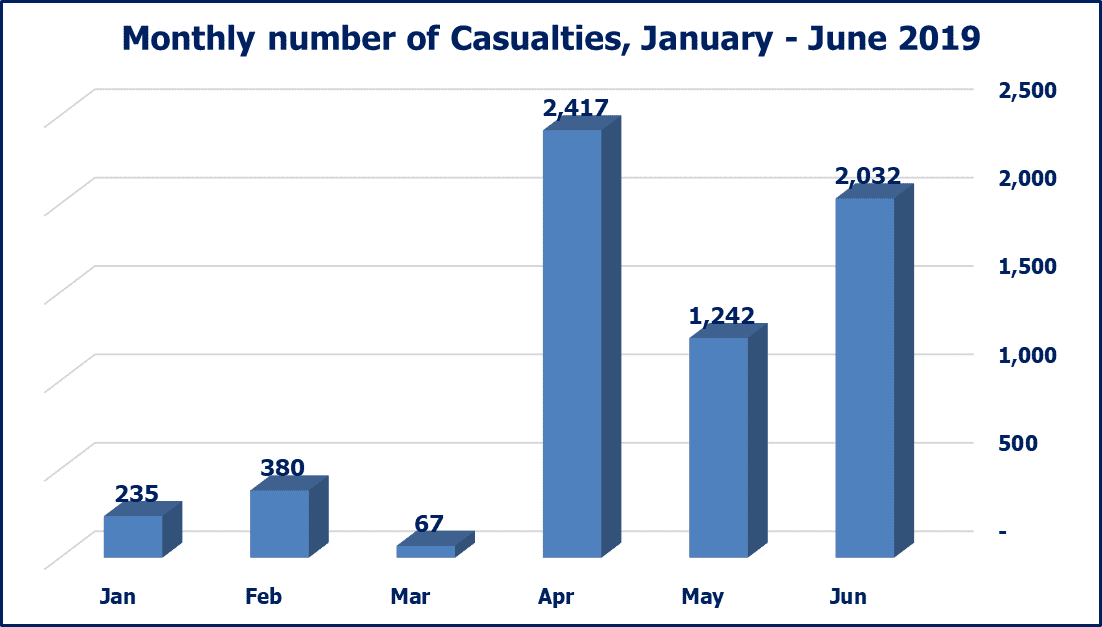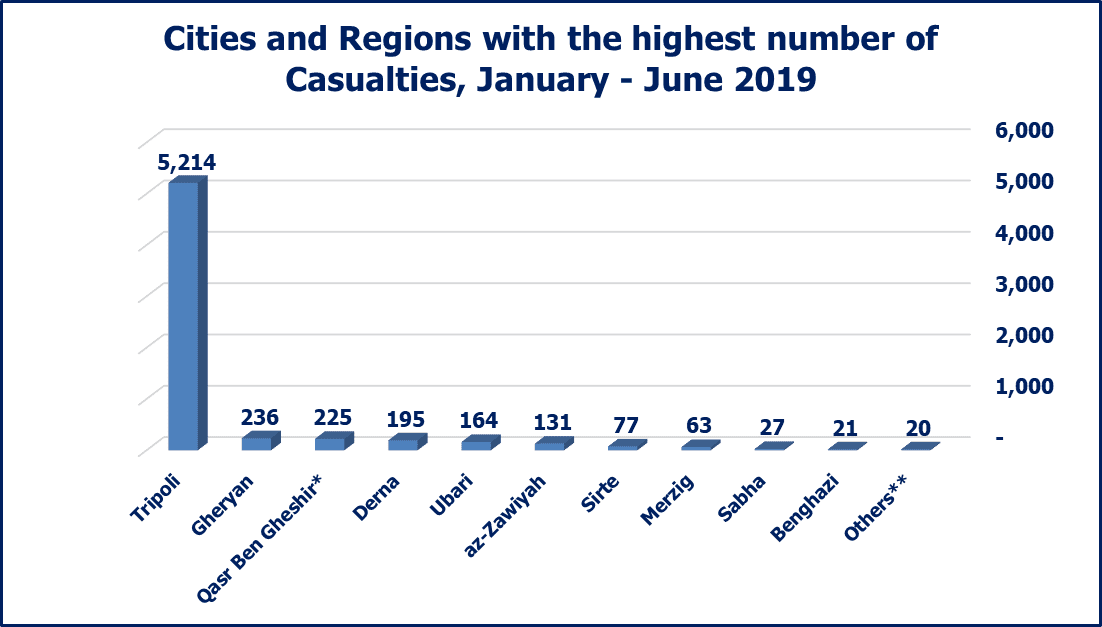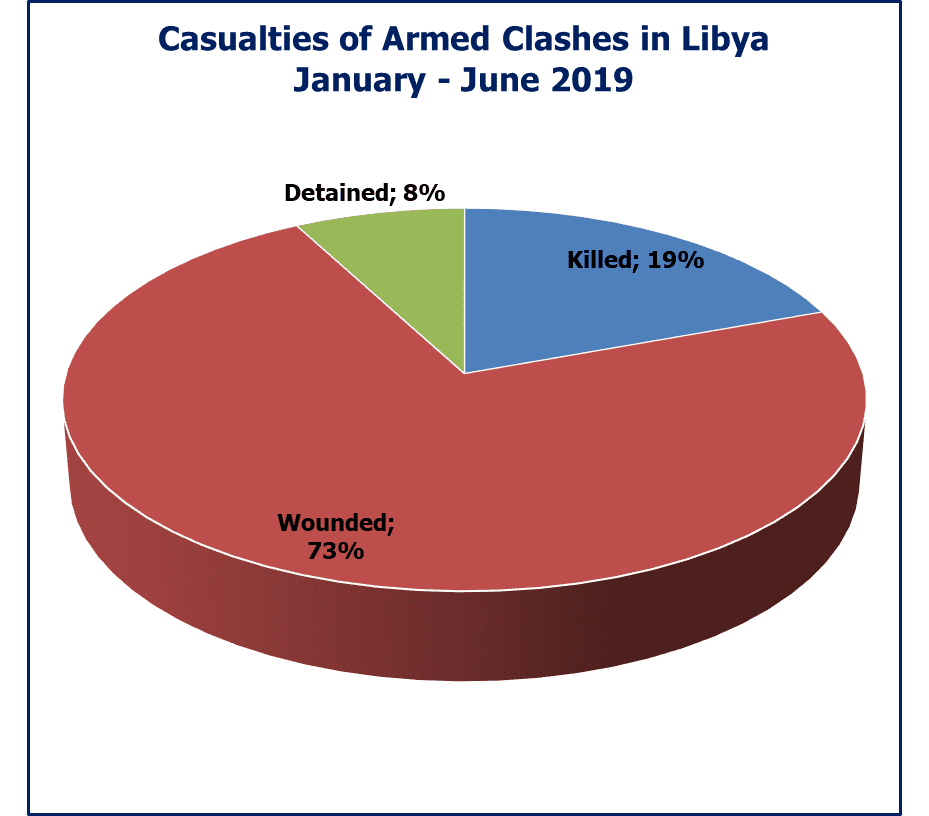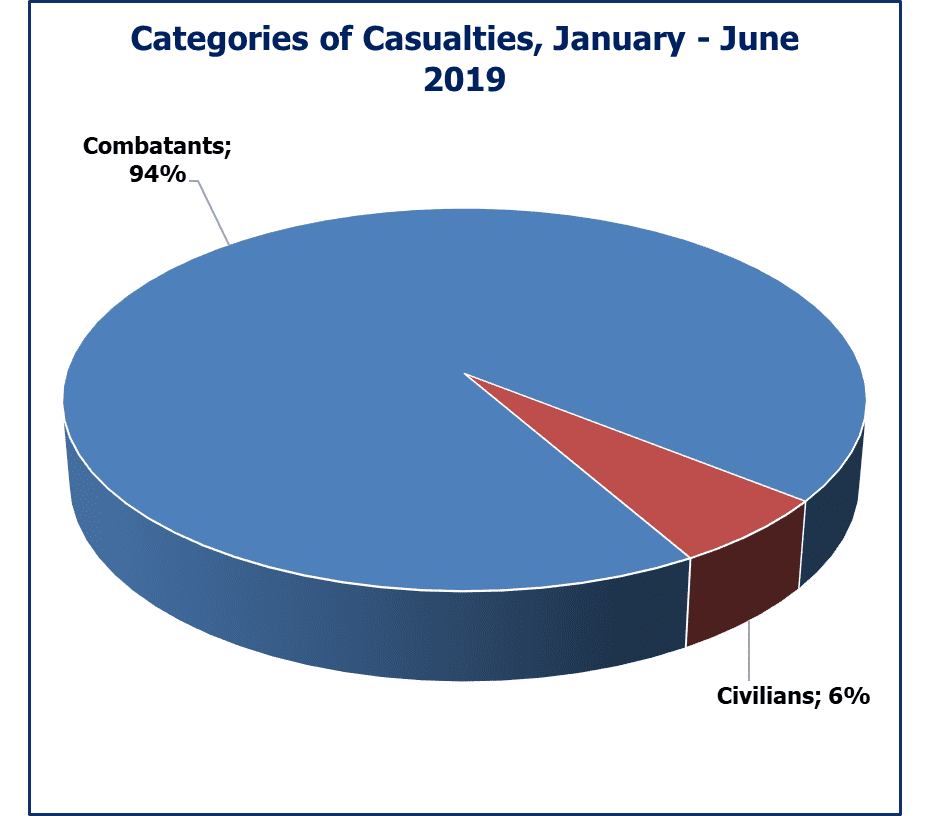Casualties of Armed Clashes in Libya, January – June 2019
The second quarter of 2019 witnessed very serious escalation in civilian and combatant casualties since the beginning of the attack on Tripoli, which began on 4th April 2019, by renegade Maj General Khalifa Haftar. 89% of the total number of casualties of armed confrontations during the first half of 2019 were reported in the second quarter of the year, with 192 civilians, including 9 children.
During the reporting period, a total of 6’373 casualties, including dead, wounded and prisoners, were reported as a result of armed clashes in various areas and cities of Libya. 94% of the victims were combatants, 493 killed, while the civilian casualties were 381, including 15 children.
1’238 persons were killed (19% of the total), and 4’637 persons were injured (73%), while the rest, 498 persons were abducted or captured by the warring parties. The month of April was the most violent with 2’417 casualties, accounting for 38% of all casualties of the First Half of 2019. 16% of April’s casualties were killed, 381 casualties.
Geographically, incidents were spread across the various regions of Libya, but the majority were in the Western Region; Tripoli and its suburbs[i] reported about 82% of the total number of casualties of armed clashes, 5’214 casualties; Gheryan with 236 casualties (3.7%); Qasr Ben Gheshir & its surroundings with 225 casualties (3.5%). Most of the casualties, 6’353 persons, 99.7% of the total for the First Half of 2019, were documented in only 10 cities, while the rest, 20 casualties (0.3%) were reported in 7 other cities and towns.
The main source of data for this report, in the second quarter of this year, is the data published by the World Health Organization office (WHO) in Libya[ii]. The WHO publishes its reports irregularly, at the beginning of the attack on Tripoli, the reports were very frequent, sometimes almost daily, and then recently became less frequent. The reports of the organization are a cumulative report of the number of dead and wounded. No details on specific locations of the casualties[iii], gender of casualties, and only since 27th May 2019 the reports started providing the number of civilians among the casualties. Also, the reports of WHO do not include numbers of captives or missing persons, and do not indicate whether or not the number of casualties among forces[iv] of Khalifa Haftar.
For the foregoing[v] reasons, we note that the actual number of victims of armed confrontations, especially since the beginning of April, may be greater than the figures in this report.
[i] Regarding the number of victims of armed confrontations in the vicinity of Tripoli since the beginning of the attack on Tripoli, we have relied on the reports of the World Health Organization. The WHO’s reports do not elaborate on the geographical locations of the casualties. Therefore, the figures in our report concerning the city of Tripoli include the city of Tripoli and its environs, from Tajoura in the east to Janzour in the west, Wadi ar-Rabi’e, Tripoli International Airport and as-Suwani area.
[ii] World Health Organization-Libya account on Twitter (link).
[iii] For example, the report by WHO on 15th July 2019: “The violence in Tripoli has killed 1093 people, including 106 civilians, and injured 5752 people, including 294 civilians. More than 100 000 people are displaced.” (link).
[iv] Throughout the reporting period, the spokesman for the forces of the renegade Maj General Khalifa Haftar, made only one announcement of their casualties, it was on April 10th, 2019.
[v] For example, we did not include the number of casualties among the forces of Haftar, announced by the military spokesman of Haftar on April 10th, 2019 “Mesmari, confirmed during a press conference on Wednesday in Benghazi, that 28 personnel of the National Army were killed and 92 were wounded in the battles of Tripoli” (Almotawaset), and on June 13th, 2019 “medical sources announced the deaths of 33 fighters belonging to the Karama operation Tuesday, 11/6 at the Tripoli International Airport frontline” (Victims Organization for Human Rights). These figures, and others, were assumed to be included in the reports o


 f the World Health Organization
f the World Health Organization


